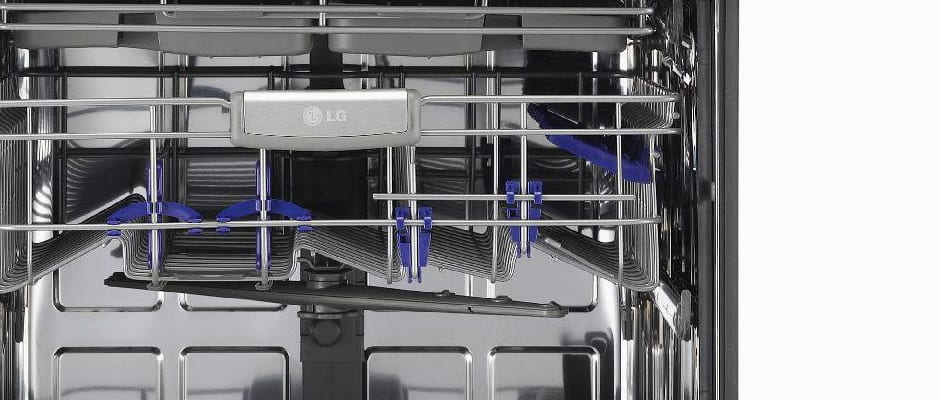Introduction
Aside from the wash options, the {{product.model}} is a solid machine, if expensive and a bit erratic. It also has an extremely high capacity (thanks to the cutlery rack) and is well designed. Our biggest complaint was its inconsistency, specifically in regards to efficiency and cleaning performance. For those who are concerned about cost, the $1,200 price tag may be an insurmountable barrier. And we’d have to agree.
Front
{{section_header}}{{section.name}}{{/section_header}}
The front has a curved handle, an {{product.brand.name}} logo in the upper left, and a series of lights meant to indicate cycle status.
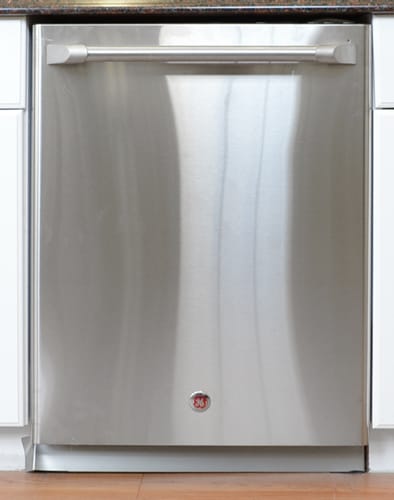
The front of the GE CDWT980VSS.
Finish
{{section_header}}{{section.name}}{{/section_header}}
The {{product.model}} features a stainless steel exterior and wash tub. We noticed that the front seemed particularly prone to fingerprints.

Controls
{{section_header}}{{section.name}}{{/section_header}}
The control panel is awesome. It looks daunting, what with all the doodads and curlicues, but the touch response is accurate and reliable, and the general layout is intuitive enough. We also really liked the blue back-lighting, and the timer is a much appreciated (yet under-utilized) bonus—even yet, it’s accurate.
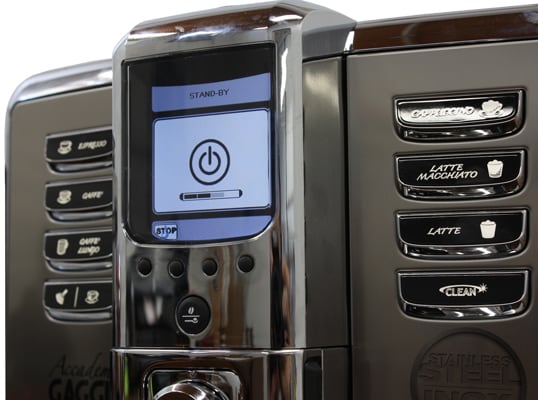
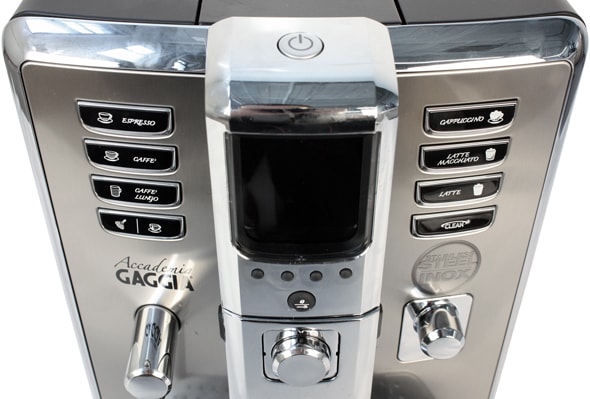
Interior
{{section_header}}{{section.name}}{{/section_header}}
The stainless steel wash tub features three racks—two main racks, plus a cutlery rack. While this allowed for a high capacity, each one seemed hastily built, as they were flimsy and easily came loose.
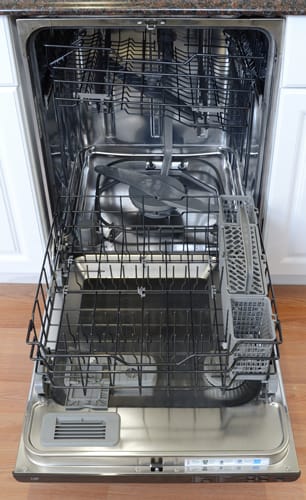
The CDWT980VSS with door open.
Top Rack
{{section_header}}{{section.name}}{{/section_header}}
The top rack features a series of blue latches and holders that did little more than get in the way. The angle and placement of the tines was also somewhat unusual, forcing us to rethink our traditional dish loading pattern.
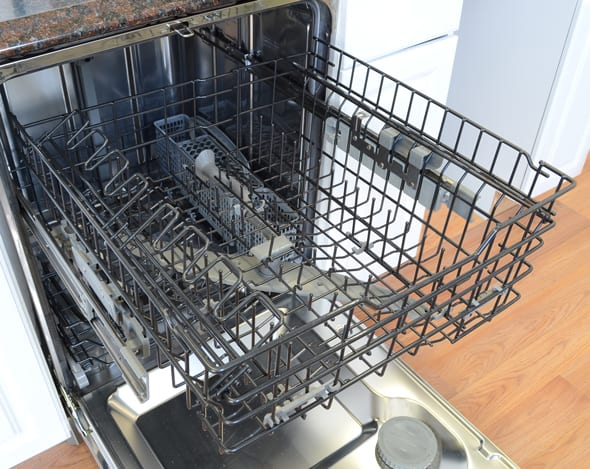
The top rack of the CDWT980VSS.
Bottom Rack
{{section_header}}{{section.name}}{{/section_header}}
The bottom rack is highly adjustable, and features a metallic front handle and collapsible cutlery basket. We removed a large portion of this basket during our testing, opting instead for the cutlery rack and a high capacity.
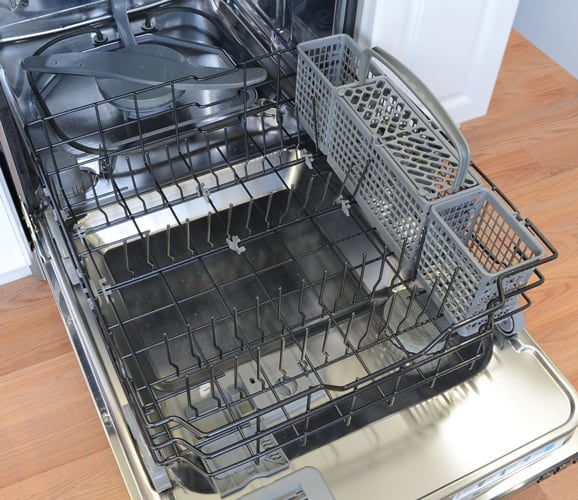
The bottom rack of the CDWT980VSS.
Cutlery Basket
{{section_header}}{{section.name}}{{/section_header}}
The {{product.model}} features both a cutlery basket and rack. The rack is intended for silverware and smaller utensils (not spatulas, ladles, and the like). Conveniently, the basket can be disassembled into three smaller units, freeing up room in the lower rack. This is the reason for the {{product.model}}’s impressively high capacity score.
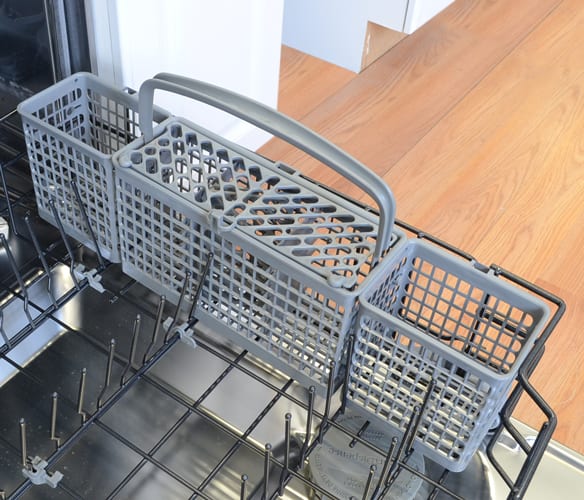
The CDWT980VSS cutlery basket.
Electricity Use
{{section_header}}{{section.name}}{{/section_header}}
Power consumption was mostly average. We found the Quick & Dry cycle consumed 0.56 kWh per wash, while the Normal and Steam Power cycles used 0.65 and 1.23 kWh, respectively. This last figure (Steam Power) is quite high, and helped broaden the cost-per-wash range, which runs from 6 to 13 cents, depending on the cycle.
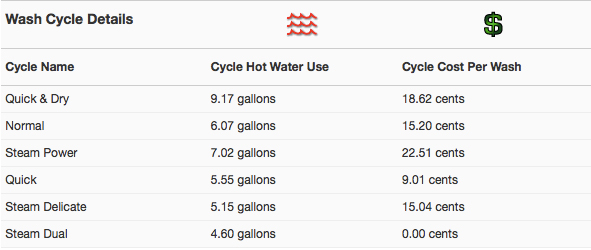
Water Use
{{section_header}}{{section.name}}{{/section_header}}
This is where the {{product.model}} was really inefficient. It’s true that more hot water aids in the cleaning process (and since this machine uses steam power on some cycles it requires even more), but it obviously costs more. We found the Quick & Dry cycle drained a whopping 9.17 gallons of hot water. This is a ridiculous amount of water for a dishwasher cycle, especially a quick wash. The Normal and Steam Power cycles used slightly less—6.07 and 7.02 gallons, respectively. This makes for a water cost of roughly 6 to 9 cents per wash.
Yearly Running Cost
{{section_header}}{{section.name}}{{/section_header}}
Based on the above data—and the assumption that the Normal wash will be selected 50 percent of the time—we calculated that the {{product.model}} will cost you roughly $37.19 per year to operate. This is a pretty high figure. We’ve seen far worse efficiency performance so it’s probably not a deal-breaker, but folks who are already worried about their utility bills may want to take this into consideration.
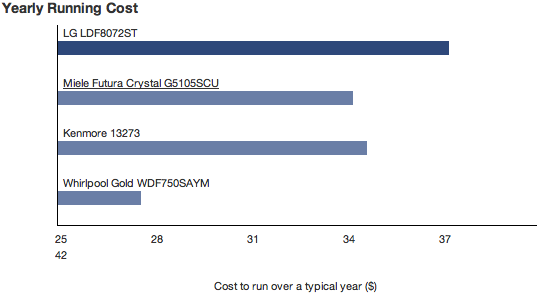
Washing Speed
{{section_header}}{{section.name}}{{/section_header}}
None of the wash cycles was very slow to finish, but they weren’t very quick either. The Quick & Dry cycle took 87 minutes to complete (pretty slow for a quick wash), while the Quick cycle (which skips the drying phase) took a much brisker 38 minutes. The Normal wash lasted 139 minutes, and the Steam Power cycle took 167 minutes.
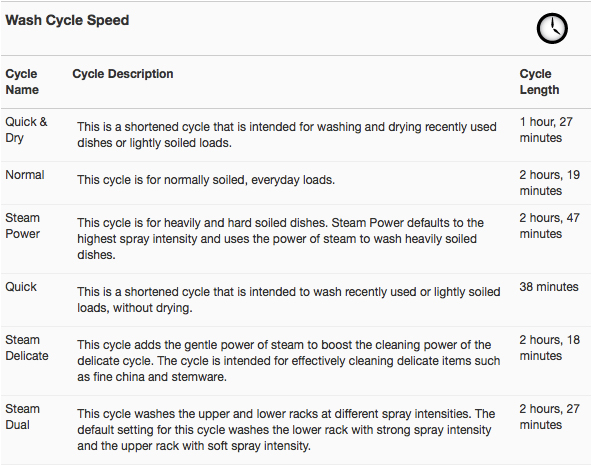
Washing Performance
{{section_header}}{{section.name}}{{/section_header}}
Most of the {{product.model}}’s performance issues had to do with inconsistency. Across multiple passes the cleaning power seemed to fluctuate. This is partly due to the filtration system, which can back up over prolonged use, but it is also due to the dramatic shifts in water and energy use—even within the same cycle.
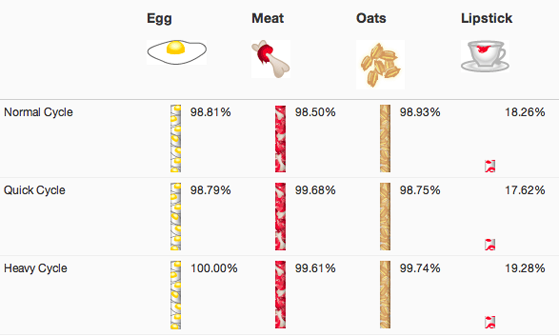
Quick Wash Cycle
{{section_header}}{{section.name}}{{/section_header}}
For a quick cycle that consumes more than 9 gallons of water we were expecting some shiny dishes. What we got was anything but. The Quick & Dry didn’t perform poorly, but it was far from perfect. None of the stain tests scored perfectly, and it had some serious trouble with our dried spinach test. Because this cycle was less efficient than the Normal wash and only slightly less time-consuming, there really aren’t many reasons to run it. Stick with the other cycles.
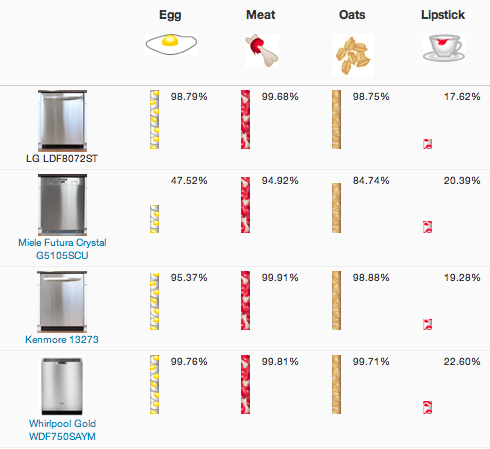
Normal Wash Cycle
{{section_header}}{{section.name}}{{/section_header}}
The Normal wash performed significantly better than the Quick & Dry, but it was still a bit disappointing. Aside from the usually difficult spinach test, leftover food soils were sparse but scattered throughout the wash load. It also failed to receive a perfect score on any of the stain tests—a common occurrence among mid- to low-end dishwashers, but rare among high-end machines such as this.
Normal Cycle
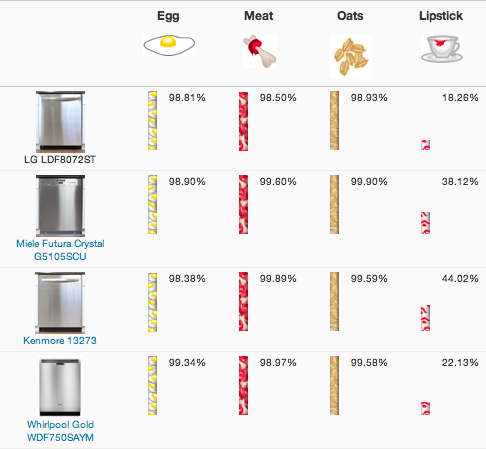
Heavy/Pots & Pans Wash Cycle
{{section_header}}{{section.name}}{{/section_header}}
Clearly the best performer, the Steam Power cycle can thank the presence of, well, steam power for its washing prowess. While it was far from perfect, most of our stain tests were close to being completely clean. It was mainly small specks and dried-on soils that docked its overall performance. The Steam Power cycle will cost you a bit more to run, but if this isn’t a concern we’d recommend using it for even slightly larger-than-normal loads.
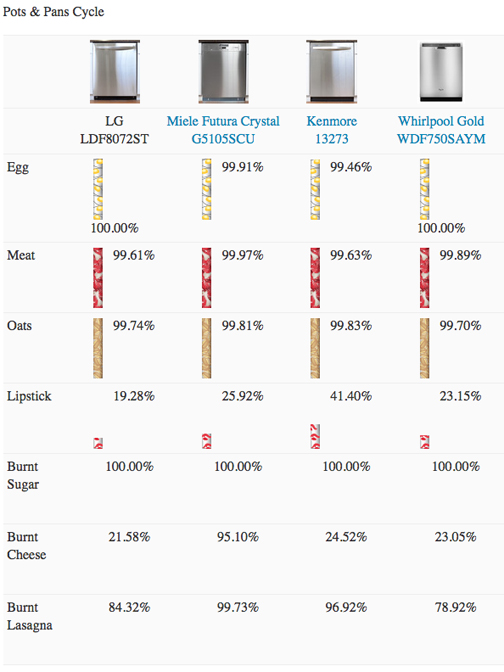
Washing Cycles
{{section_header}}{{section.name}}{{/section_header}}
There are six cycles in the {{product.model}}: Steam Power, Steam Dual (which washes the upper and lower racks with different spray intensities), Steam Delicate, Normal, Quick & Dry, and Quick. This is quite a lot, especially for a dishwasher that has a bunch of customization options.
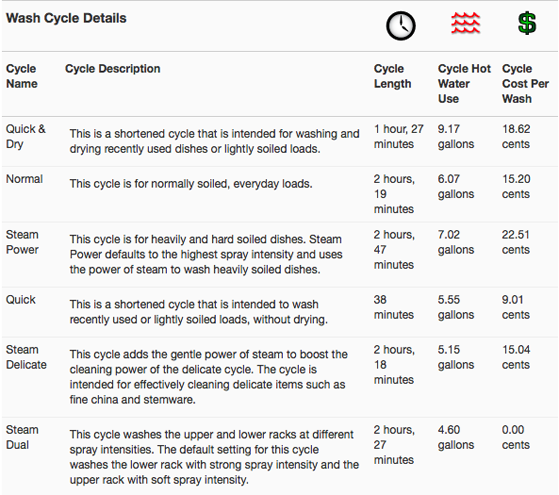
Customization
{{section_header}}{{section.name}}{{/section_header}}
The wash options and customization features are almost too much to keep track of. Here’s a rundown of what’s available: spray intensity (soft, medium, and strong), delay start (up to 19 hours), extra dry (adds 30 minutes of extra dry time), sanitary (heats water to 160 degrees to sanitize wash load), and extra rinse (adds another rinse to cycle).

Additional Wash Options
{{section_header}}{{section.name}}{{/section_header}}
If the customization options weren’t enough, there are several additional wash options: rinse only (standalone cycle that simply rinses dishes to be washed later), Eco option (uses less water), and half load (washes just the upper or lower rack). There are also a number of other options not related to washing, such as a child lock, digital time display, and LG's Smart Diagnosis (for troubleshooting).

Capacity
{{section_header}}{{section.name}}{{/section_header}}
Another impressive feature of the {{product.model}} is its capacity. Because of the cutlery rack, which allows you to store silverware and utensils separate from the bottom rack, we were able to fit a whopping 12 place settings, including a serving setting. However, the capacity score is listed as 11.5. This is because industry testing standards call for the inclusion of one serving setting for every six place settings. Sine we were unable to fit that last serving setting, the score was tallied at 11.5.
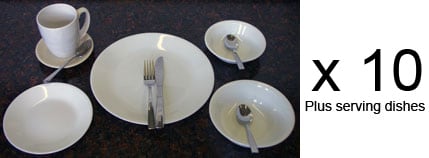
Top Rack
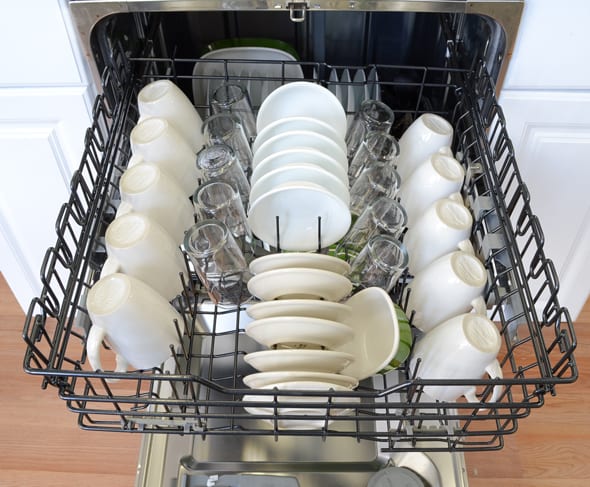
Bottom Rack
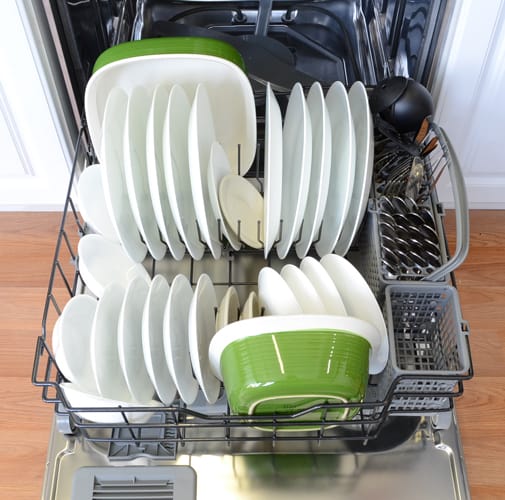
Wash Arms & Filters
{{section_header}}{{section.name}}{{/section_header}}
The filter system includes three detachable units—a fine filter screen, a large soil cylinder, and another fine filter cylinder surrounding the large one. We quickly noticed that this dishwasher’s performance varies greatly depending on how clean the filter is, so you may want to clean it regularly.
The wash arms are plastic and dual-ended. This slightly reduces the spray area and is likely a reason for the mediocre wash performance.
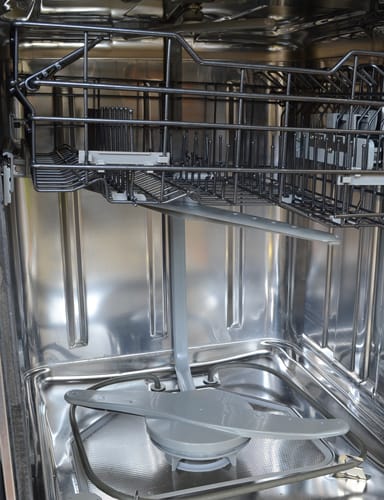
The CDWT980VSS wash arms.
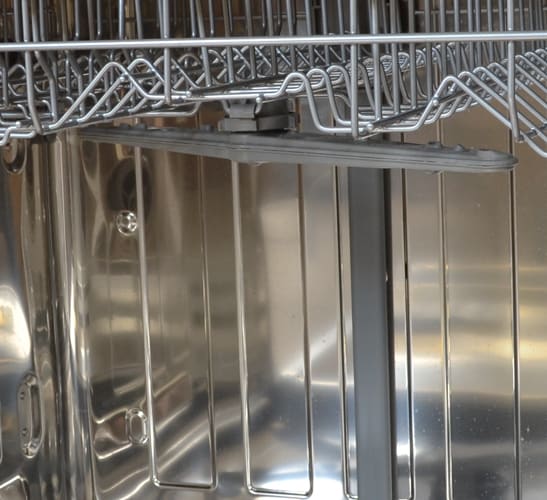
The DW 14140 upper wash arm
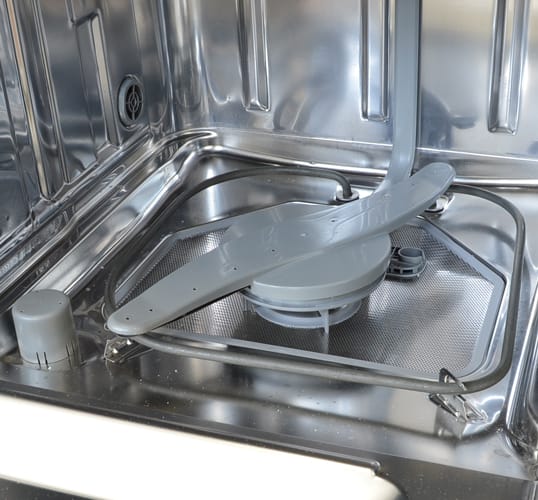
The CDWT980VSS filter.
Lower Dish Rack
{{section_header}}{{section.name}}{{/section_header}}
On a few occasions, the lower rack slid off its treads; it didn’t spill dishes everywhere, thankfully, but it was quite annoying. It’s not the track that caused this but the cheap build of the wheels.

The bottom rack of the CDWT980VSS.
Upper Dish Rack
{{section_header}}{{section.name}}{{/section_header}}
The top rack also seemed somewhat hastily built. The rack slid in and out of the wash tub in a jerky manner, and the adjustable tines were not securely locked in place. Furthermore, the angle of the tines and the placement of the foldable rack on the right side made it more difficult to load glassware and mugs, such that we had to develop a new loading pattern. Still, this didn’t take away from our ability to load 12 place settings, which is extremely impressive.

The top rack of the CDWT980VSS.
Cutlery Holder
{{section_header}}{{section.name}}{{/section_header}}
There are two cutlery holders—one a basket, the other a rack. We’d recommend using the rack when you need to save space. Otherwise, you might as well load utensils and silverware in the basket. The nifty thing about the basket is that it can be disassembled into three units, creating an optimal level of flexibility. Once again, this is why the machine has such a large capacity.

The CDWT980VSS cutlery basket.
Detergent Dispenser
{{section_header}}{{section.name}}{{/section_header}}
The detergent dispenser is nothing special. There are two measurement lines, plus a prewash container and a rinse aid dispenser, which includes its own meter.
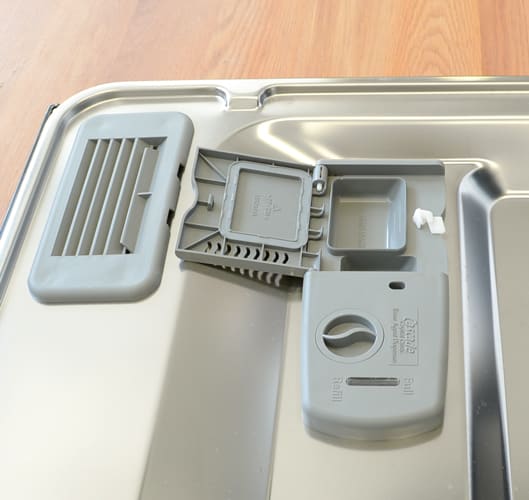
The CDWT980VSS detergent dispenser.
Ease of Use
{{section_header}}{{section.name}}{{/section_header}}
We’re hesitant to rave about the {{product.model}}’s usability. The control panel, although nicely designed, is a bit confusing at first, and the racks are clunky and easily fall out of their tracks. We don’t think this alone should deter someone from buying the dishwasher, but for the hefty price of $1,200 it’s worth complaining about.
Noise
{{section_header}}{{section.name}}{{/section_header}}
The stainless steel wash tub made for a very quiet machine. Some people don’t care about noise—unless it’s like a lawnmower—but we’d be shocked if anyone complained about this thing’s noise level.
Controls
{{section_header}}{{section.name}}{{/section_header}}
The control panel is touch-operated and responds very well, unlike a lot of other interfaces which seem to lag. Our main beef with the control panel was its lack of intuitiveness. You’ll have to consult the manual to figure out which button or logo means what. This isn’t uncommon and you may not have a problem with it, but we find this to be a sign of poor design.


Efficiency
{{section_header}}{{section.name}}{{/section_header}}
As mentioned, much about the {{product.model}} is customizable, and which options you choose directly affects its water and energy consumption. Furthermore, we noticed significantly inconsistent efficiency data across multiple passes. Overall, though, the {{product.model}} is not very efficient. You can expect it to cost you about $37.19 a year to operate.
Washing Performance
{{section_header}}{{section.name}}{{/section_header}}
Here’s where we were most disappointed. Were the {{product.model}} a mid-range machine, its wash performance would be average or even impressive. But it's not; it costs $1,200. And for that reason we were let down. The Quick & Dry cycle is so inefficient and time-consuming as to render it useless, while the Normal and Steam Power washes, although much better, were nothing earth-shattering. It had trouble on our spinach tests, but did pretty well with proteins (meat, dried milk, baked-on egg). It was also a bit inconsistent, meaning you’d be wise to clean out the filter from time to time.
Features
{{section_header}}{{section.name}}{{/section_header}}
This is where the {{product.model}} really impressed us. It has one of the widest, most customizable ranges of options we’ve ever seen. While the interface is somewhat confusing, it’s hard to imagine a more logical way to design such an involved control panel. The only problem with this is that most consumers find wash features to be secondary to wash performance and design. And since these two categories were basically yawn-inducing, the $1,200 price tag makes the {{product.model}} a difficult sell.
Meet the tester
Tyler Wells Lynch is a freelance writer and journalist whose work has appeared in Vice, Wirecutter, Gizmodo, The Rumpus, Yes!, and the Huffington Post, among others. He lives in Maine.
Checking our work.
Our team is here to help you buy the best stuff and love what you own. Our writers, editors, and experts obsess over the products we cover to make sure you're confident and satisfied. Have a different opinion about something we recommend? Email us and we'll compare notes.
Shoot us an email